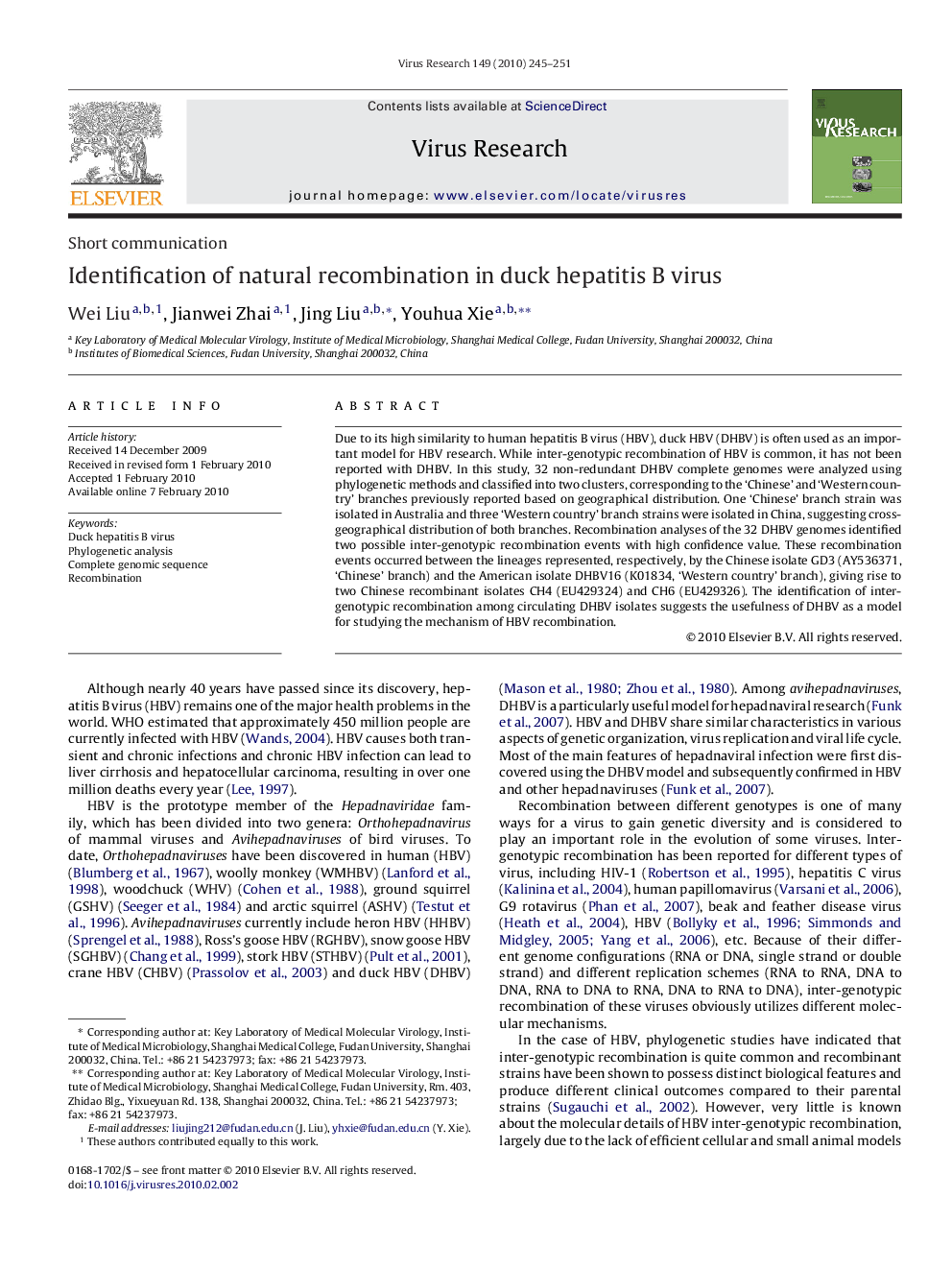| Article ID | Journal | Published Year | Pages | File Type |
|---|---|---|---|---|
| 3429528 | Virus Research | 2010 | 7 Pages |
Due to its high similarity to human hepatitis B virus (HBV), duck HBV (DHBV) is often used as an important model for HBV research. While inter-genotypic recombination of HBV is common, it has not been reported with DHBV. In this study, 32 non-redundant DHBV complete genomes were analyzed using phylogenetic methods and classified into two clusters, corresponding to the ‘Chinese’ and ‘Western country’ branches previously reported based on geographical distribution. One ‘Chinese’ branch strain was isolated in Australia and three ‘Western country’ branch strains were isolated in China, suggesting cross-geographical distribution of both branches. Recombination analyses of the 32 DHBV genomes identified two possible inter-genotypic recombination events with high confidence value. These recombination events occurred between the lineages represented, respectively, by the Chinese isolate GD3 (AY536371, ‘Chinese’ branch) and the American isolate DHBV16 (K01834, ‘Western country’ branch), giving rise to two Chinese recombinant isolates CH4 (EU429324) and CH6 (EU429326). The identification of inter-genotypic recombination among circulating DHBV isolates suggests the usefulness of DHBV as a model for studying the mechanism of HBV recombination.
